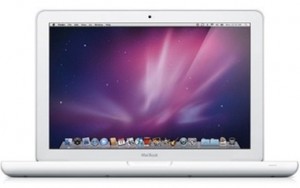
The company has slowly over the years quietly rolled out programs and support bulletins for each generation of the plastic-based MacBook. Many consider the polycarbonate design of the MacBook to be fundamentally flawed, and the ultimate cause for Apple to discontinue the product line entirely. The MacBook line was shortly transitioned to aluminum, which then became the 13-inch MacBook Pro. During that time, even the lowest-end model was offered in plastic.
By late 2009, Apple implemented its unique “unibody” build process on the MacBook model, citing that the process would improve MacBook’s durability. However, users have faced constant issues, with even the newest of MacBooks.
Problems have ranged from the all-too-common discoloration of the palm rests, chronic on each MacBook generation, to hairline cracks that have begun to appear around the display hinges. Previous MacBook generations also faced hinge cracks, as well as around the lower case’s trimlines. The last MacBook generations did not encounter this problem, as the unibody process did fix that flaw.
Apple has since consolidated the MacBook line with the MacBook Air. By bringing the entry level MacBook Air to $999, and introducing features such as high-speed I/O, via Thunderbolt, Apple has essentially replaced the need for MacBook in their line. Co-founder and former CEO Steve Jobs noted Apple’s disdain for making a low-end Mac, stating it “… isn’t in our DNA…” to make cheaper machines.
Had the MacBook line been continued, Apple would have likely turned to Intel’s Core i3 processor line, which has not been sold to-date in any Apple portable, and also has been withdrawn from iMac. Such a move though would likely have only cannibalized MacBook Air sales. The unibody line received only one bump, a year after it was introduced, replacing the 2.26 GHz Core 2 Duo with a 2.4 GHz version, and upgrading the GeForce 9400M graphics-and-northbridge combination with a GeForce 320M.
The unibody MacBook does also stand out as being one of the only Intel-based Macintosh model that uses very few Intel components, other than the CPU. Internally, it was offered as a means of better negotiating with Intel on chip prices; demonstrating that Apple can quickly furnish a machine that does not require Intel silicon. The machine largely tapped NVIDIA’s MCP79 GeForce-and-Northbridge chipset, a technology NVIDIA began moving away from after litigation with Intel.
Apple and Intel maintain a strong pact though, and remain strategic partners, with technologies such as Thunderbolt stemming from the relationship.